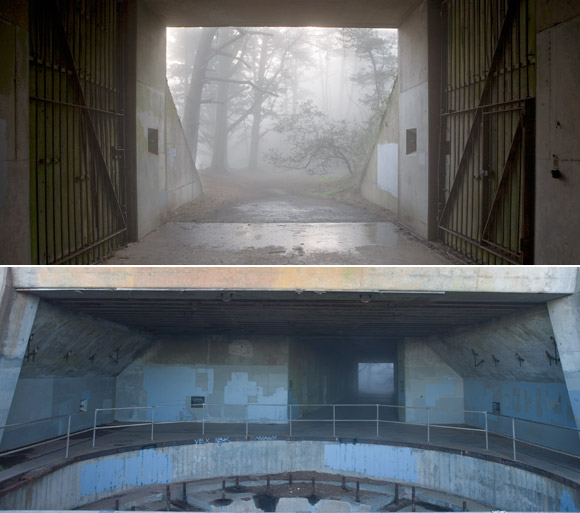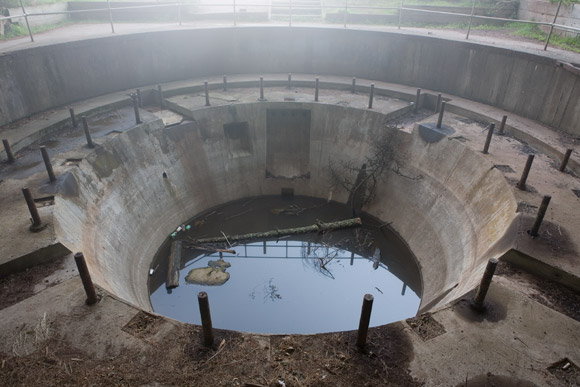Tunnel Rain
Posted: December 2nd, 2012 | Author: Nathan | Filed under: field recording, nature recording, sound design
“Construction 129,” a never-completed gun emplacement overlooking the entrance of the Golden Gate, Fort Cronkhite, Marin Headlands, California.
When a winter storm was forecast for the San Francisco Bay Area, I decided to head to the Marin Headlands and try my luck recording bad weather in the abandoned gun emplacements and military fortifications of Fort Cronkhite. I had previously found some great metal sounds at Fort Baker, also in the Headlands, and I was also inspired by Tim Prebble’s high-wind-sub-bass-generator post.
Unfortunately for me, the storm track was slower than predicted, and I wasn’t able to record in peak wind, although some moderate rain started to fall. Such things happen, even with the best of intentions. So, what do you do when your primary plan doesn’t pan out? You reset your expectations and record what you can. I mean, c’mon, I’m in these amazingly evocative ruins! Surely there’s something that’s audibly interesting!
So, I decided to record rain in the tunnels. A recent re-viewing of Ridley Scott’s Prometheus reminded me that tunnels and caverns in films often feature water drops that are drenched in heavy reverb. I pressed the “record” button in several settings and closed my eyes: Was I in the bowels of an ancient spacecraft? The Mines of Moria? The hull of a leaky, empty freighter?

The gun emplacement at Construction 129. No weapon was ever installed.
Occasional wind blasts forced me to enable a high pass filter at 120Hz to try to remove some of the ambient rumble that didn’t help the recording. In addition, there are no fewer than three foghorns in the Marin Headlands, so I had to make an edit every 50 seconds to eliminate the lonely bleat of the Point Bonita lighthouse horn.
There is always something worth recording. You just need to let your disappointment go, reset your expectations with some beginner’s mind, and just start rolling.
[soundcloud url=”http://api.soundcloud.com/tracks/69735256″ params=”auto_play=false&show_artwork=false&color=ee0000″ width=”100%” height=”166″ iframe=”true” /]
[Sennheiser MKH 30/50 mid-side stereo pair into Sound Devices 702 recorder]
